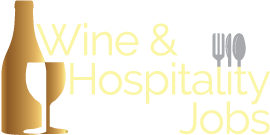WineAndHospitalityJobs.com: Simplifying Cost of Goods Sold
Simplifying Cost of Goods Sold
Anyone responsible for the day-to-day operation of a
restaurant must understand what Cost of Goods Sold represents and how to
complete the standard calculation.
What is Cost of Goods Sold?
What does Cost of Goods Sold refer to? In
the most basic terms, Cost of Goods Sold refers to “what the cost of the product
used was to generate sales.”
The Cost of Goods Sold calculation is used to calculate a Cost
of Goods Sold percentage for a given accounting period, as shown below in Figure
1. An accounting period can be different from restaurant to
restaurant. In most cases, an accounting period refers to a
calendar month, from the first day of the month to the last day of the month;
however, there are restaurants that use a 13-period calendar year, where the
year is broken into even four-week periods equaling 13. Many
restaurants have found this to be extremely effective. An
accounting period may also be a day or a week, if a restaurant is trying to
correct a problem right away. For the purpose of this
article, an accounting period will be a calendar month.
The Cost of Goods Sold calculation is also most valuable when
it is broken down by categories, i.e., food, liquor, bottle beer, draft beer and
wine. This is more effective when broken into categories because if, for
instance, the pour cost is high, you can determine where the problem is.
You can react by examining your draft system for problems due to foaming
issues, because your draft numbers are high. Otherwise, if
liquor pour cost had all categories lumped in one figure, you would not know
where to look for the problem without redoing all of your work.
Standard Cost of Goods Sold Calculation
|
A |
|
|
|
|
B |
+ |
|
|
|
C |
= |
|
|
|
D |
– |
|
|
|
E |
= |
|
|
|
F |
|
|
|
|
G |
|
|
|
|
|
|
Figure 1 |
|
Product Use
Product Used represents exactly that: the dollar amount of the
entire amount of product used in any given period, Total Available minus Ending
Inventory. Use literally refers to product used (or the
product that has left your shelves) and use can be categorized in four ways.
1)
Waste or Spoilage – if your staff is
burning food and it gets thrown away, your staff is giving a larger portion than
the recipe calls for or your refrigeration unit goes down and nobody caught it,
so you had to throw away product, it is still considered use.
Please make a special note that all of the causes for waste are avoidable
and are a direct result of a lack of management, training and controls.
2)
Theft – if your staff takes food home in
their knapsack, if they give friends free drinks that are not authorized or make
food for them that is not authorized, this too is considered use.
Again, controls in place, along with diligent management, can reduce
theft to almost nothing, but just understand some people will steal.
3)
Comps – this strictly refers to all
comps that are not rung up on the point-of-sale system or cash registers.
This might be an owner walking into the kitchen and taking steaks home
for a barbeque. This is considered use because the product
has been used even though no sale has been rung up.
4)
Sales – the reason you hope your entire
inventory of product gets used, because it means the only reason product left
your shelves was to bring in money.
Completing This Calculation is a Must
Cost of Goods Sold is what is
called a Controllable Expense, an expense that is in the day-to-day control of
management. This calculation is your key indicator that will
show how close your store came to achieving its goals and is necessary to
quantify performance. These numbers will allow you to better
interpret how your store performed in a given period. For
instance, if you have a target food cost of 30% and your food cost percentage
came in at 34% on $100,000 in food sales, you would have used $34,000 in food
product vs. the $30,000 that was budgeted. That means you
would have wasted $4,000 – most likely due to poor management.
It is the equivalent of a kitchen manager taking $4,000 and placing it in
front of their General Manager, dousing it in lighter fluid and setting it on
fire.
You can clearly see that
calculating Cost of Goods Sold is a must.
David Scott Peters is the founder of
Smile Button Enterprises, LLC,
a hospitality systems consulting firm that trains restaurant owners and managers
on the appropriate skill sets and SMART Systems—those that are Simple,
Measurable, Applicable, Repeatable and Trainable—to realize their dreams in the
competitive restaurant business. David can be contacted at
david@smilebutton.com.
